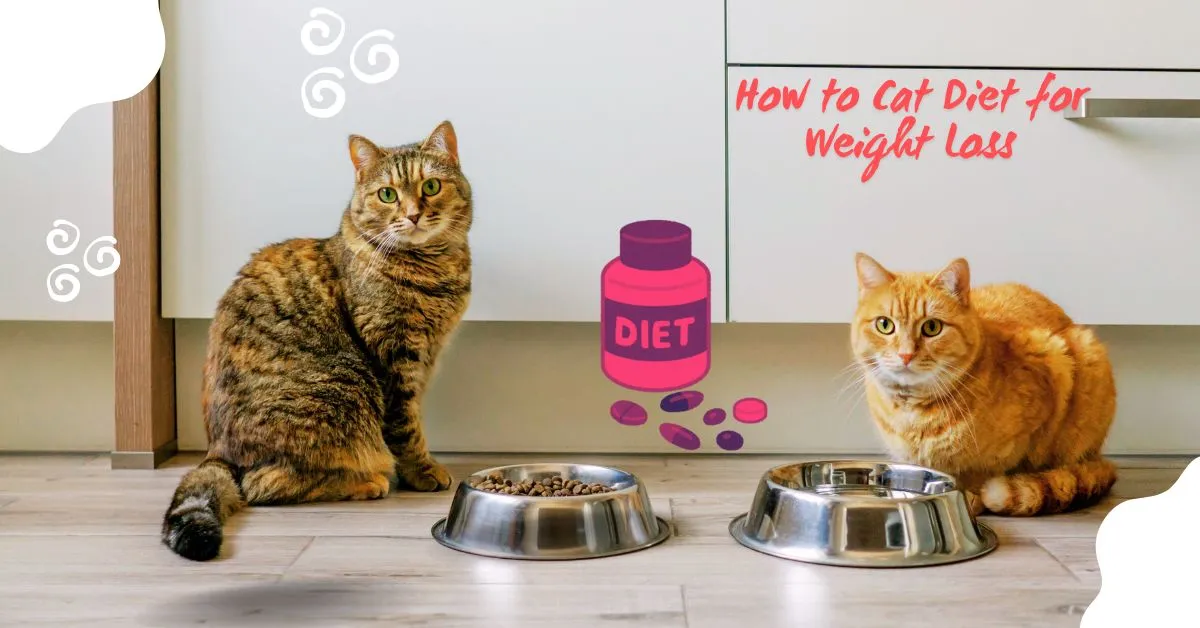Helping your cat lose weight is essential for their health and happiness. Overweight cats can face problems like diabetes, joint pain, and heart disease.
To help your cat lose weight, feed them high-quality protein, control portion sizes, and reduce carbs. Incorporate wet food for hydration, limit treats, and increase daily exercise. Consult with a vet to monitor progress and ensure safe, gradual weight loss.
Cat Diet for Weight Loss: Checklist Table
| Step | Details |
|---|---|
| 1. High-Quality Protein | Choose lean meats like chicken or fish; avoid fillers like corn or wheat. |
| 2. Portion Control | Measure food accurately; feed smaller, consistent portions. |
| 3. Low Carbohydrate Intake | Focus on foods with minimal carbs; avoid high-carb treats and fillers. |
| 4. Include Wet Food | Opt for wet food to increase moisture intake and support hydration. |
| 5. Ensure Hydration | Provide fresh water at all times; consider wet food for additional moisture. |
| 6. Set a Feeding Schedule | Feed at the exact times daily to help regulate your cat’s metabolism. |
| 7. Limit Treats | Keep treats small and infrequent; use playtime or attention as rewards instead. |
| 8. Increase Exercise | Engage your cat in daily activities using toys and interactive play. |
| 9. Consult a Veterinarian | Regular vet check-ups to monitor weight loss and adjust the diet plan. |
| 10. Monitor Progress | Track your cat’s weight regularly; adjust the plan as needed for safe weight loss. |
06 Steps About “How to Cat Diet for Weight Loss”
01) Balanced Diet: The Foundation of Weight Loss
The first step to helping your cat lose weight is providing a balanced diet. Cats need a diet high in animal-based proteins and low in carbohydrates.
What to Feed Your Cat
- High-Quality Protein: Choose lean meats like chicken or fish. Avoid foods with fillers like corn or wheat.
- Wet Food: Wet food is an excellent option because it’s high in moisture and usually lower in carbs, which helps with weight loss.
- Limit Carbs: Reduce foods high in carbohydrates to prevent weight gain.
02) Portion Control: Feed the Right Amount
Feeding your cat the correct portion is crucial. Overfeeding is a common cause of weight gain.
How to Control Portions
- Measure Food: Use a measuring cup or scale to ensure you’re giving the right amount of food.
- Set a Feeding Schedule: Feed your cat at the exact times daily to help regulate their metabolism.
03) Exercise: Get Your Cat Moving
Regular exercise is essential for helping your cat lose weight. It helps burn calories and keeps your cat healthy.
Easy Ways to Exercise Your Cat
- Play with Toys: Use laser pointers, feather toys, or balls to encourage your cat to play. Aim for 10-15 minutes of play twice a day.
- Cat Trees and Scratching Posts: These give your cat opportunities to climb and stretch, which helps them stay active.
- Interactive Toys: Consider toys that move independently to keep your cat entertained and moving even when you’re busy.
04) Avoid Treats: Cut Down on Extra Calories
Treats can add extra calories that lead to weight gain.
How to Manage Treats
- Limit Treats: If you give treats, keep them small and limited to a few per day.
- Healthy Alternatives: Instead of treats offer extra playtime or affection as a reward.
05) Vet Consultation: Professional Guidance is Key
Before starting a weight loss plan, consult with your vet. They can provide a personalized plan that fits your cat’s needs.
Regular Check-Ups
- Monitor Progress: Schedule regular vet visits to check your cat’s weight and adjust the plan if needed.
- Safe Weight Loss: Your vet can ensure your cat loses weight safely and steadily.
06) Track Progress: Monitor Your Cat’s Weight Loss
Weight loss in cats should be gradual. Keeping track of their progress is essential to ensure they’re losing weight at a healthy rate.
How to Track
- Weigh Your Cat Regularly: Use a scale to track your cat’s weight weekly.
- Adjust as Needed: If your cat isn’t losing weight, you might need to adjust their diet or exercise routine. Always consult your vet before making changes.
Helping your cat lose weight doesn’t have to be complicated. Focusing on a balanced diet, portion control, regular exercise, and working with your vet can help your cat achieve a healthy weight and live a happier life. Keep it simple, and be patient—the results will be worth it!
